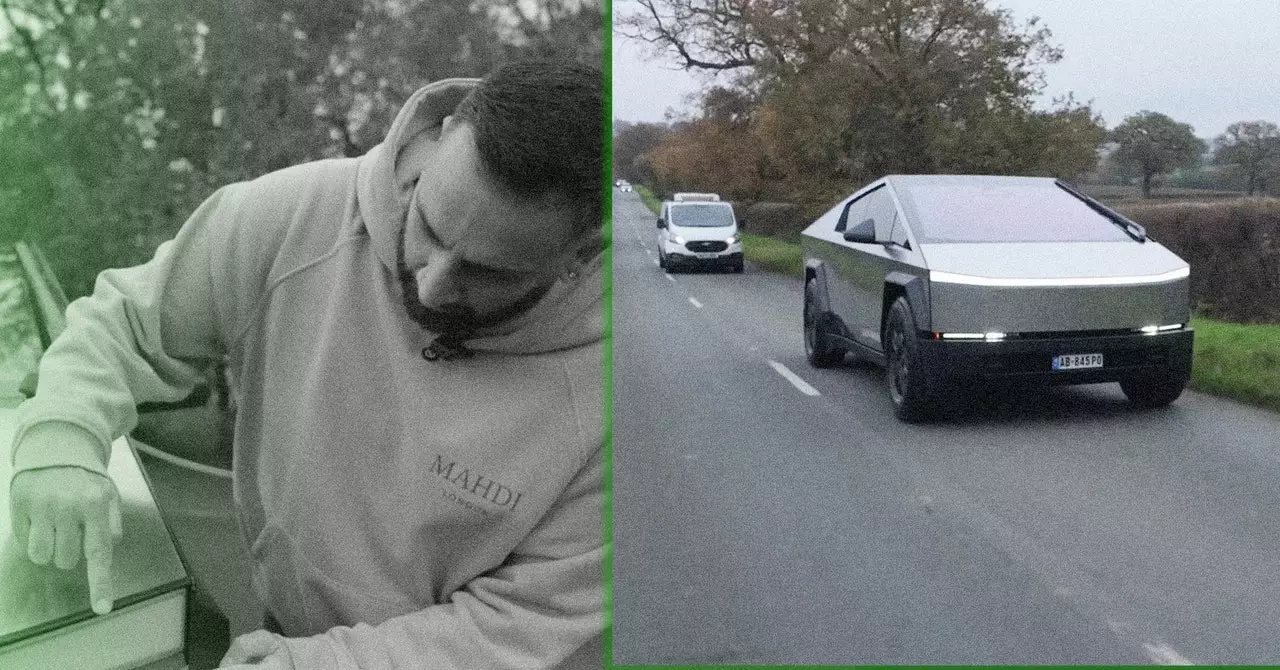The emergence of Tesla’s Cybertruck has stirred a cocktail of excitement and skepticism in automotive circles, particularly regarding its safety and legality on UK roads. While Tesla has marketed the Cybertruck as a revolutionary vehicle with cutting-edge technology, experts are raising alarms about its structural weight and design, fearing it might pose safety risks.
Concerns voiced by professionals like Margaret Winchcomb, deputy executive director of the Parliamentary Advisory Council for Transport Safety (PACTS), highlight the trepidations surrounding the Cybertruck’s entry into the UK market. Winchcomb stresses that any loophole allowing this heavy vehicle onto UK streets could dramatically increase hazards for pedestrians and other road users. Her sentiments resonate with many advocates for road safety, arguing that the industry’s rush towards innovation should not come at the cost of established safety standards.
Despite Tesla’s claims about the Cybertruck’s resilience, independent verification of these assertions is scarce. While the National Highway Traffic Safety Administration (NHTSA) and the Insurance Institute for Highway Safety (IIHS) are tasked with conducting crash tests, they often prioritize vehicles that exhibit substantial sales potential. Joe Young, IIHS media director, emphasizes this limitation, underscoring that testing decisions are profoundly influenced by market demand rather than comprehensive safety investigations.
The Cybertruck’s unusual and sharp design not only highlights the vehicle’s futuristic appeal but also raises regulatory flags within the UK’s Department for Transport (DfT). As stated by the DfT, the Independent Vehicle Approval (IVA) scheme was created to cater to conventional vehicles, effectively putting the Cybertruck in a paradoxical position as it may not meet existing criteria. This lack of foresight concerning electric vehicles like the Cybertruck is a critical concern, and it underscores a potential disconnect between innovative automotive design and infrastructural regulations.
Commentators have pointed out that navigating the paperwork and approval requirements for an unconventional vehicle like the Cybertruck could become an uphill battle. The apprehensions surrounding its technology suggest that the vehicle may not comply with UK specific regulations. With the DfT indicating that the Cybertruck’s integration into their framework is uncertain, individuals attempting to bring these vehicles into the UK face a precarious legal situation.
The legal repercussions faced by individuals like Charalambous, who attempt to operate his Albanian-plated Cybertruck in the UK, further illustrate these complexities. The DfT highlights regulations prohibiting the operation of foreign-registered vehicles by UK residents, except under specific circumstances. Charalambous’ claim of possessing a green card from Albania doesn’t exempt him from the law; consequently, he risks his insurance being invalidated while driving an unregistered vehicle.
This legal labyrinth raises critical questions about enforcement and compliance. If caught, drivers like Charalambous face potential fines and complications that could impede their efforts to legalize their vehicles. The prospect of owning a legally compliant Cybertruck in the UK might turn into a financially burdensome endeavor, characterized by uncertainty and bureaucratic obstacles.
Ultimately, the discourse surrounding the Cybertruck’s safety and legality underscores larger issues within the automotive industry, especially as electric vehicles rapidly evolve. The dialogue reveals urgent needs for regulatory bodies to revise existing frameworks to account for emerging vehicle technologies. Timely adjustments are necessary to ensure that innovation does not proceed at the expense of public safety and regulatory coherence.
As the automotive landscape shifts toward EVs, proactive measures must be taken to address valid concerns regarding heavy, high-speed vehicles like the Cybertruck. Without rigorous testing and improved regulations, the risk of placing inadequately vetted vehicles on the road continues to increase. Therefore, stakeholders—manufacturers, regulators, and consumers—must collaborate to navigate the evolving terrain of vehicle safety and ensure a secure and equitable future for all road users.

